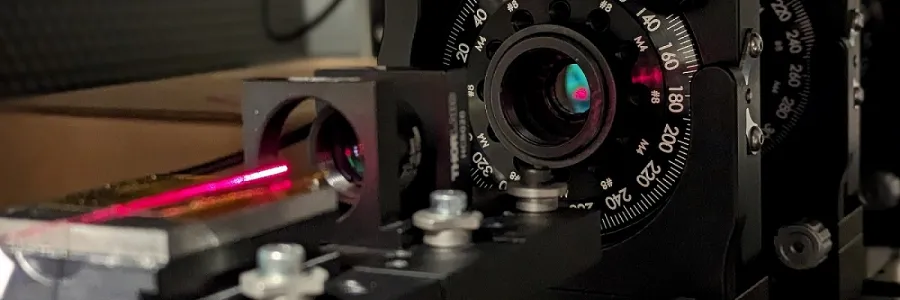Within our group we make hollow-core and more generally micro-structured fibres using fused silica glass. This class of fibre has internal structures vital to their function, and these structures are often hollow. Fused silica glass becomes fluid at temperatures greater than 1400°C and hence most of the processing we do is at very high temperatures. The final stage of the fibre fabrication process is where we draw a preform, a large but short version of our design, into a microscopic fibre several kilometres long. To do this we use a dedicated 12 metre drawing tower and heat our preform up to over 1700°C in a tube-like furnace, while pulling the glass at specific speeds to get the size we need. We coat the fibre with a protective polymer and then collect it on a fibre bobbin. While doing this we also use gas pressure within the micro-structure, and inline fluid-dynamic modelling, to allow us to control its internal structure and achieve the optical performance we aim to achieve.
This process allows us to fabricate state-of-the-art, world-record low loss fibres, that guide at a wide variety of wavelengths from the ultraviolet through the visible to the infrared parts of the electromagnetic spectrum. These fibres are used in a broad range of different application areas both here at the University of Southampton and with our collaborators at other universities and in industry.
While much of our work focuses on developing new and improved fibres for the vitally important telecommunications industry, we also make ultra-violet, visible and mid-IR, guiding fibres for sensing, quantum, and industrial applications. To do this we have pioneered a new fabrication process that allows us to fabricate record long-lengths of ultra-broadband fibre.

